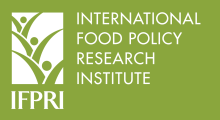Resource information
Uganda's economy remains heavily dependent on the agricultural sector. In 2008/09, the agricultural sector contributed 90 percent of total export earnings, generated 23.7 percent of Gross Domestic Product (GDP), and directly or indirectly provided livelihoods for about 90 percent of the population (MFPED, 2009). However, most of the agricultural production is by small-scale subsistence farmers who use rudimentary technology and are largely engaged in non-market production. The Plan for Modernisation of Agriculture (PMA) was, therefore, designed by the government of Uganda as a strategic framework for eradicating poverty through the implementation of multi-sectoral interventions aimed at easing the multifaceted constraints faced by farmers. Specifically, PMA is aimed at increasing income and quality of life, improving household food security, providing gainful employment, and providing sustainable use and management of resources. In support of PMA priority interventions, the Government of Uganda is implementing the Prosperity for All development framework that embraces rural enterprise and promotes industry by building on the Plan for Zonal Agricultural Production, Agro-processing and Marketing. Through zoning and enterprise selection criteria, PMA intends to provide information and guidance for agricultural investment to local governments and individual farmers at the agricultural production zone level (Figure 1). The International Food Policy Research Institute is assisting PMA in building capacity to target profitable types of enterprises. This study is aimed at providing information about the profitability of PMA priority enterprises in the 10 established agricultural zones of Uganda. The findings and recommendations provided here were obtained through analysis of the Uganda National Household Survey (UNHS), the most frequently updated database on household economic activities in the country. This policy brief concludes with suggestions on how the UNHS could be improved to provide more accurate information on relative enterprise profitability in the future.


